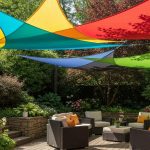Understanding Airflow Principles
In any home, understanding airflow principles is essential for maintaining a comfortable indoor environment. At its core, airflow refers to the movement of air within a space, driven by factors such as temperature differences and pressure gradients.
For a well-ventilated home, knowing the basics of ventilation is crucial. Airflow is affected by factors like architectural design, structural features, and the materials used. The position of windows, the height of rooms, and even the types of doors can influence air movement significantly; creating an uninterrupted path for airflow can positively impact indoor air quality.
In parallel : Maximizing returns: discover the advantages of investing in multi-family homes in portsmouth
Fast forward to newly constructed homes, and you’ll find common misconceptions regarding airflow. Many believe that modern homes don’t require much attention to air movement due to improved insulation and energy-efficient designs. However, these features can sometimes hinder natural ventilation, highlighting the importance of understanding these dynamics.
To ensure comfort and health, considering airflow early in the design stage leads to better management. Additionally, balancing between natural and mechanical ventilation might be needed, depending on the specific needs of a building, thus providing a more holistic approach to maintain air quality and manage energy use effectively.
Also to discover : Transform your space: eco-conscious strategies for a drought-resilient water-wise garden in brighton
Ventilation Options for New Builds
In new home construction, choosing the right ventilation systems is pivotal for maintaining indoor air quality and comfort. There are two primary types of ventilation solutions: natural ventilation and mechanical ventilation. Understanding the differences and benefits of each option will guide healthier and more energy-efficient designs.
Natural ventilation leverages environmental factors, like wind and thermal buoyancy, to circulate air. It’s sustainable and energy-efficient but depends heavily on the building’s design and local weather conditions. Factors such as the orientation of the building, window placement, and the surrounding environment significantly influence the effectiveness of a natural system.
On the other hand, mechanical ventilation systems use fans and ducts to control airflow, ensuring consistent air exchange irrespective of external conditions. While they require energy to operate, advancements in technology have led to highly efficient systems that minimise energy consumption. They are particularly useful in tightly sealed, insulated homes where natural airflow is limited.
When selecting a ventilation system, consider how it impacts energy efficiency. Mechanical systems often include energy recovery features that temper incoming fresh air, reducing heating and cooling demands. Comparatively, optimised natural systems can decrease energy reliance, yielding long-term cost savings. Evaluating these aspects ensures a balanced approach to efficient ventilation.
Insulation’s Role in Airflow Management
Understanding the role of insulation in managing airflow is vital for maintaining indoor temperature stability and reducing air leakage. Insulation acts as a barrier to heat flow, significantly impacting a home’s thermal performance. By minimising heat exchange through walls, roofs, and floors, insulation helps maintain a consistent indoor climate, enhancing comfort levels throughout the year.
Typical insulation materials include fibreglass, foam boards, and spray foam, each offering varying degrees of effectiveness. Fibreglass is a popular choice due to its cost-effectiveness and ease of installation, while foam boards provide higher resistance to airflow, making them ideal for areas prone to drafts. Spray foam, though often more expensive, offers a superior seal against air leakage, ensuring minimal heat loss.
Proper installation techniques are essential to prevent air leakage. Ensuring a tight fit around windows, doors, and electrical outlets reduces gaps where air can escape, enhancing a building’s energy efficiency. Techniques such as caulking and weatherstripping complement insulation efforts by sealing potential leaks in a structure’s envelope. Prioritising these factors ensures better indoor temperature regulation, maximises energy savings, and extends the building’s longevity by reducing exposure to external elements.
Design Considerations for Optimal Airflow
Designing a home for optimal airflow is crucial in achieving a healthy indoor environment. Home design plays a pivotal role in establishing efficient air circulation, helping to maintain fresh air consistently.
Strategically considering the architectural layout influences how air moves. Positioning of windows and doors is critical. For maximum natural airflow, windows should be placed opposite each other to create cross-ventilation, enhancing the smooth exchange of indoor and outdoor air. This strategy reduces reliance on mechanical ventilation and promotes energy efficiency.
For an unobstructed flow, opting for an open floor plan is beneficial. This layout reduces barriers that could obstruct airflow, allowing air to move freely through the space. However, some prefer compartmentalized spaces for privacy. In such cases, incorporating vents in walls or doors can ensure airflow isn’t compromised.
Effective airflow optimization is highly dependent on individual preferences and building needs. Balancing an open and divided space might provide the best of both worlds, ensuring adequate airflow while maintaining functional and aesthetic requirements. By thoughtfully considering these elements, you can promote a comfortable and breathable living space.
Climate-Specific Airflow Strategies
Understanding the Manchester climate is vital for crafting effective airflow strategies that ensure home comfort year-round. Known for its temperate maritime climate, Manchester experiences mild winters and cool summers, with frequent rainfall influencing the indoor environment significantly.
When planning airflow systems, consider local weather conditions and seasonal changes. In winter, maintaining warmth while ensuring adequate ventilation prevents dampness and mold growth—a common issue due to high humidity levels. Mechanical ventilation with heat recovery can be beneficial in extracting stale air without significant heat loss. Importantly, seasonal considerations should guide the type of airflow system implemented.
In contrast, summer months might call for a blend of natural and mechanical ventilation to accommodate varying temperatures. While open windows can provide fresh air when conditions permit, a well-designed ventilation system ensures comfort on less favourable days.
Adhering to local best practices is essential. Many experts recommend double-glazing for windows and proper insulation to maintain a steady temperature and airflow, irrespective of seasonal shifts. By carefully considering Manchester’s unique climate, you can effectively manage airflow, enhancing indoor comfort and energy efficiency all year round.
Professional Insights and Resources
Consulting with HVAC professionals is crucial when dealing with complex airflow issues in your home. These experts bring a wealth of knowledge in diagnosing inefficiencies and recommending tailored airflow solutions. They can assess your current systems and suggest optimal upgrades or improvements to enhance your indoor climate significantly. Engaging with professionals ensures that your home’s ventilation meets safety standards and operates at peak efficiency.
For purchasing quality ventilation systems and insulation materials, seek reputable suppliers known for their durable and efficient products. Properly chosen equipment can improve air quality and energy efficiency while reducing overall costs. When selecting materials, consider factors like local climate and specific airflow needs to achieve the best results.
Locating recommended local services that specialise in assessing and improving home airflow can make a substantial difference. Many local providers offer comprehensive evaluations of your current setup, identifying potential areas for improvement. Additionally, these services often provide installation of advanced systems, ensuring your home benefits from the latest technology.
Engaging with both expert recommendations and top-notch resources empowers homeowners to make informed decisions regarding their indoor environment, ultimately leading to a more comfortable and energy-efficient living space.

